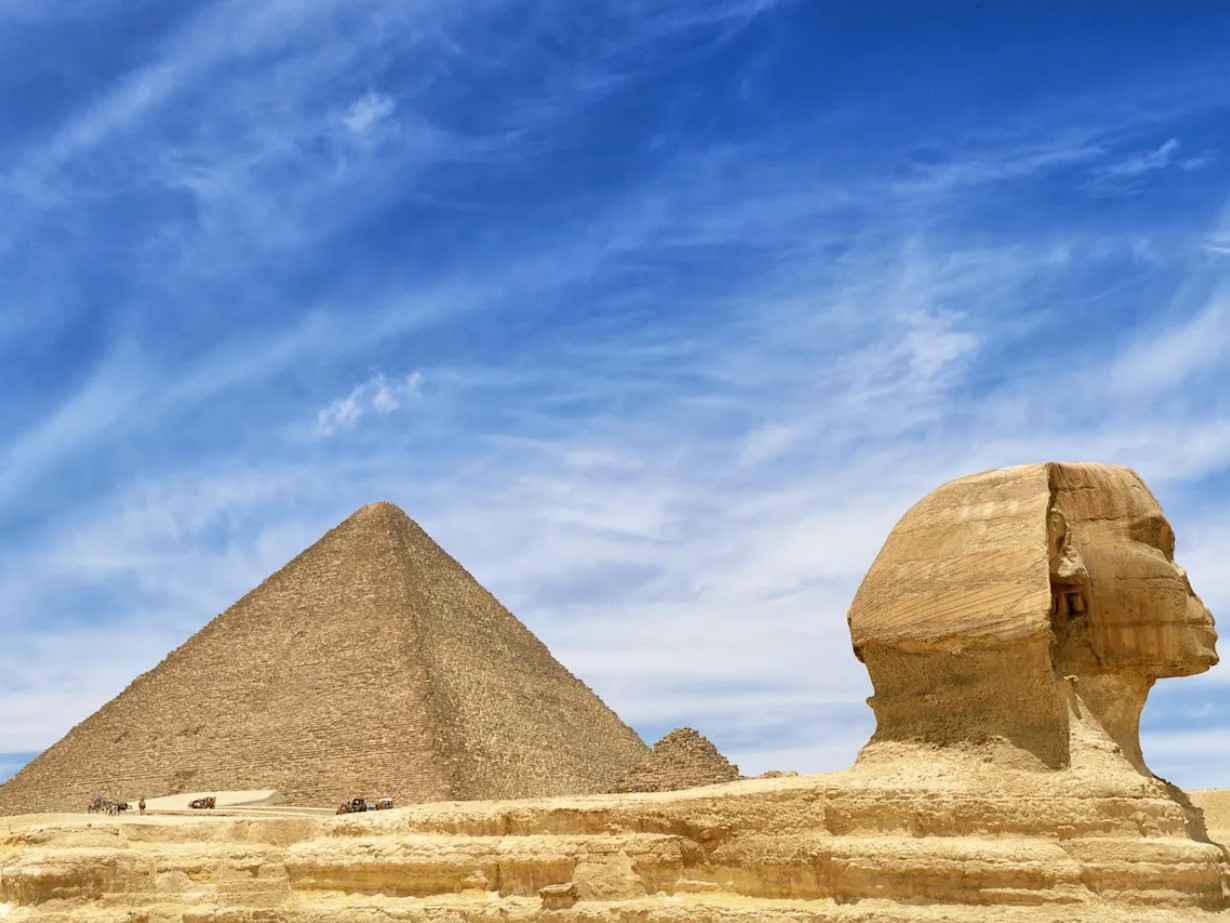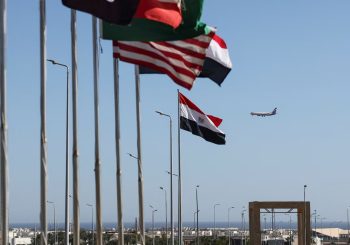For the third consecutive day, Sherif Fathy, Minister of Tourism and Antiquities, continued his oversight of the new visitor experience at the Giza Pyramids area, which is undergoing a service development pilot operation through a new entrance system and transport modes, according to a statement released on Thursday, 10 April.
The project, led by Orascom Pyramids Entertainment Services Company, is aimed at improving the overall tourist experience at one of Egypt’s most iconic archaeological sites. The start of the pilot has sparked controversy in Egypt, with dissatisfaction reported among visitors.
However, in a statement, Minister Fathy expressed his satisfaction with the ongoing progress of the initiative, citing reports from Mohamed Ismail Khaled, Secretary-General of the Supreme Council of Antiquities, as well as feedback from the local operations team and representatives from Orascom.
“The system is functioning seamlessly, and the feedback from our team has been overwhelmingly positive,” said Minister Fathy. “We are committed to offering Egyptian and international visitors the highest levels of comfort and accessibility, ensuring that their experience is not only easy and convenient but also enjoyable enough to inspire repeat visits.”
Early disruptions
The smooth progress reported by the Ministry follows a turbulent start to the trial phase. On the first day of the pilot operation, the Giza Plateau revamping project faced a backlash from owners and operators of horse and camel rides. These workers, who had previously provided rides for tourists on the plateau, staged a protest by blocking tour buses at the entrance to a newly designated pathway for electric vehicles, which are now used to transport visitors across the plateau.
The protest was a response to their relocation to new parking zones on the plateau, which they argued were too far from the main tourist entry points. This, they claimed, severely impacted their ability to earn a livelihood, as fewer visitors would be able to access their services.
Businessman Naguib Sawiris, the former chairman and CEO of Orascom Telecom Holding and Orascom Investment Holding, shared his thoughts on the social media platform X, stating that if workers refuse to move to their designated area, they will be banned from the area to protect this historic site.
“The well-being of the public and preservation of this treasure is far more important than catering to the interests of 2,000 individuals who have caused harm to the country for years’” posted Sawiris.
The Giza Plateau revamping project is a collaboration between the Egyptian government and Orascom Pyramids Entertainment Services Company, and it includes a major shift in the site’s visitor entry and transport systems.
As part of the project’s efforts to alleviate congestion and address environmental concerns, the historic entrance near the Marriott Mena House has been replaced with a new entry point located on the Fayoum Highway, south of the Pyramids.
The revised system prohibits private vehicles and tour buses from entering the plateau, instead offering visitors and their guides eco-friendly electric vehicles for transportation.
While the transition to electric vehicles was intended to provide a cleaner and more sustainable experience, some visitors and tour guides expressed frustration with the new arrangements. On social media, many shared stories of the challenges they faced in navigating the site.
In response to the backlash, Orascom issued a statement clarifying the situation. The company explained that over 45 electric buses had been deployed on the site, and the buses were scheduled to run with a five-minute interval between each to ensure continuous operation.
Orascom emphasized that it was committed to addressing any operational and logistical challenges that arose during the trial phase, and that it was working in close coordination with the government to find practical solutions.
Despite these early disruptions, the Giza Pyramids area welcomed 14,000 visitors, an 18 percent increase compared to the first day of the trial, and a 68 percent increase compared to the same period last year.
The ongoing development efforts are part of a larger initiative by the Ministry of Tourism and Antiquities to modernize Egypt’s tourism infrastructure and improve the quality of services offered to visitors at historical and cultural sites across the country.
With the pilot operation still underway, the Ministry and Orascom Pyramids Entertainment Services Company remain focused on refining the system to ensure that the Giza Pyramids area remains a world-class destination for tourists from around the globe.







Comments (0)